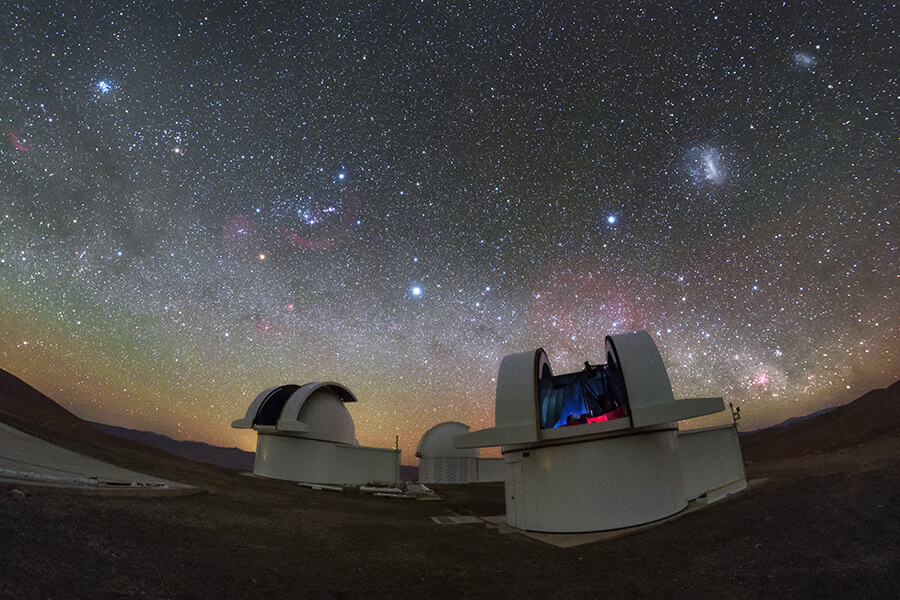
Award-winning astronomer Dr Amaury Triaud explains how he uses powerful telescopes to discover new planets orbiting stars other than our own Sun.
Dr Triaud's astronomical discoveries, including the TRAPPIST-1 system, are helping to rewrite how we think about planet formation and our place in the Universe.
He is currently contributing to SPECULOOS, which stands for “Search for habitable Planets EClipsing Ultra-cOOl Stars”. Over the next five to 10 years a set of four powerful telescopes in Chile will search for rocky and temperate planets well-suited for the detection of chemical signatures of life in their atmospheres.
Earlier this year, Dr Triaud received the Royal Astronomical Society’s Fowler Award for early career researchers. He was also named a finalist in the annual Blavatnik Awards for Young Scientists in the United Kingdom.
I had the honour of receiving the Fowler award by the Royal Astronomical Society, and of being named a finalist in the Blavatnik awards. Both recognise important work done by young researchers.
Those awards cast a light on my research, making it more visible for the wider public. The awards also reflect well on the teams that I work with, and highlight the relevance of the overall field of research. The Blavatnik award for instance is given across all of the physical sciences and engineering.
I study exoplanets, which are planets that orbit other stars than the Sun. With colleagues, we detect a planetary system now named TRAPPIST-1. Around that star, we detected seven planets, which have masses and radii comparable to Earth. We also consider the planets temperate, meaning that under certain (sometimes very exotic) geologic and atmospheric conditions, water can remain liquid for billions of years, like on Earth.
Unfortunately we have not yet detected a planet that has oxygen and can support life. What we have found are planets where the energy they receive from their star is similar to the energy Earth receives from the Sun. How goal is now find out if the planets have an atmosphere, whether the surface conditions are suitable for life, and assess whether biological processes, life, has affected the chemistry of the atmosphere, like plants have done on Earth by pumping Oxygen in the atmosphere.
Birmingham recently purchased a telescope, where we join the University of Liege, in Belgium, and the University of Cambridge. In total we control four telescopes, and together, they monitor the smallest stars that exist, waiting for planetary transit. Because we target small stars, it is easier to distinguish the signals produced by small planets, such as planets the size of Earth. We hope to discover 40 planets in 20 planetary systems.
We discover planets with the transit method. Conceptually it is simple, we look at the brightness of stars, and wait for a planet orbiting them to pass in front of them. When they do this, they cast a small shadow, which is what we detect. How deep the shadow is gives us the radius, how frequently the shadow comes backs provides how long its takes for the planet to orbit that star, and the exact time at which the shadow happens can sometimes give us the mass. With mass and radius we can compute the density, which informs us about what the planets are made of.
A combination of the characteristics of the star, and the properties of the planet make TRAPPIST-1 the most interesting, and nearly the only rocky planets that we will soon be able to study the atmosphere of. The American, European and Canadian space agencies will launch the James Webb, the most complex spacecraft ever launched, in spring of next year (2021). Onboard there is instrumentation that can remotely look into the planet’s atmospheres. TRAPPIST-1 is the first system where we will start the study of alien climates on rocky planets and get a first change at finding out whether life has emerged elsewhere.
My research is also about understanding planet formation. I study it by detecting planets in configurations that are different from the solar system, to see what outcome is produced. Around TRAPPIST-1, a star with 10 times less mass than the Sun, we have a surprising number of rocky planets for instance. I have also looked into planets that have two suns instead of one at the centre, a bit like Tatooine in the Star Wars universe.
At the moment I am trying to find out how we can answer questions about the Earth using exoplanets. For instance, we are still no certain how plate tectonics started. I suspect we might get an answer by studying certain types of exoplanets.